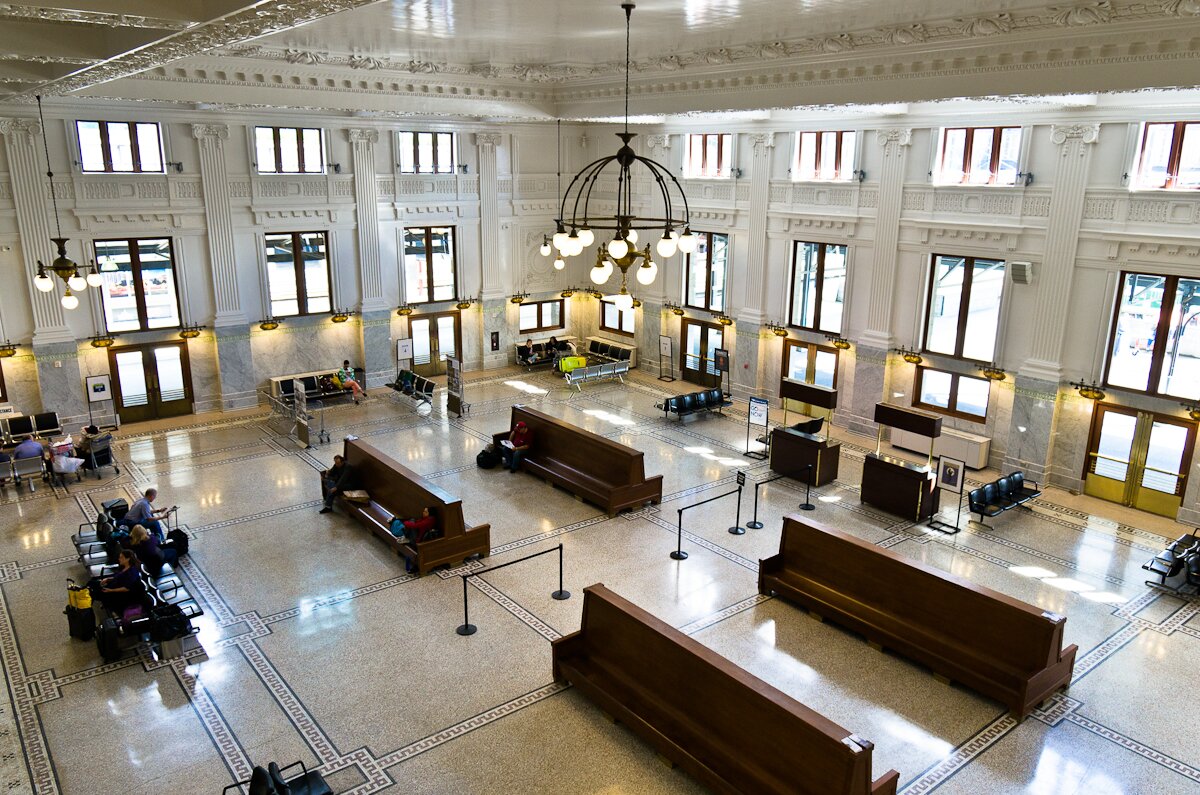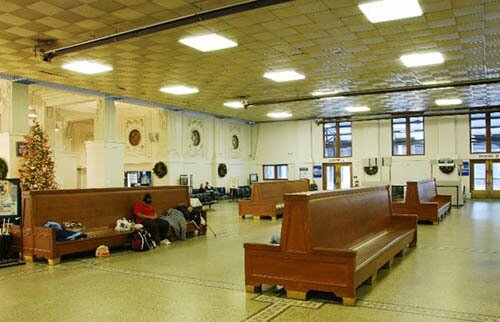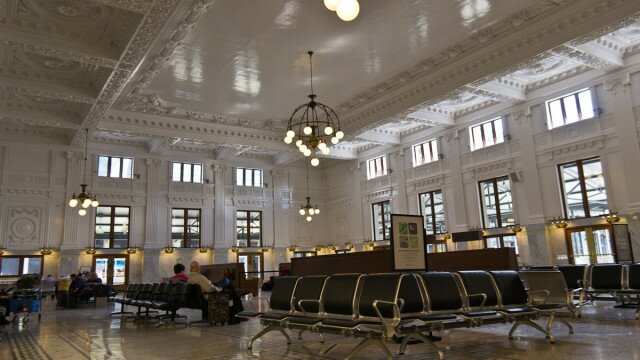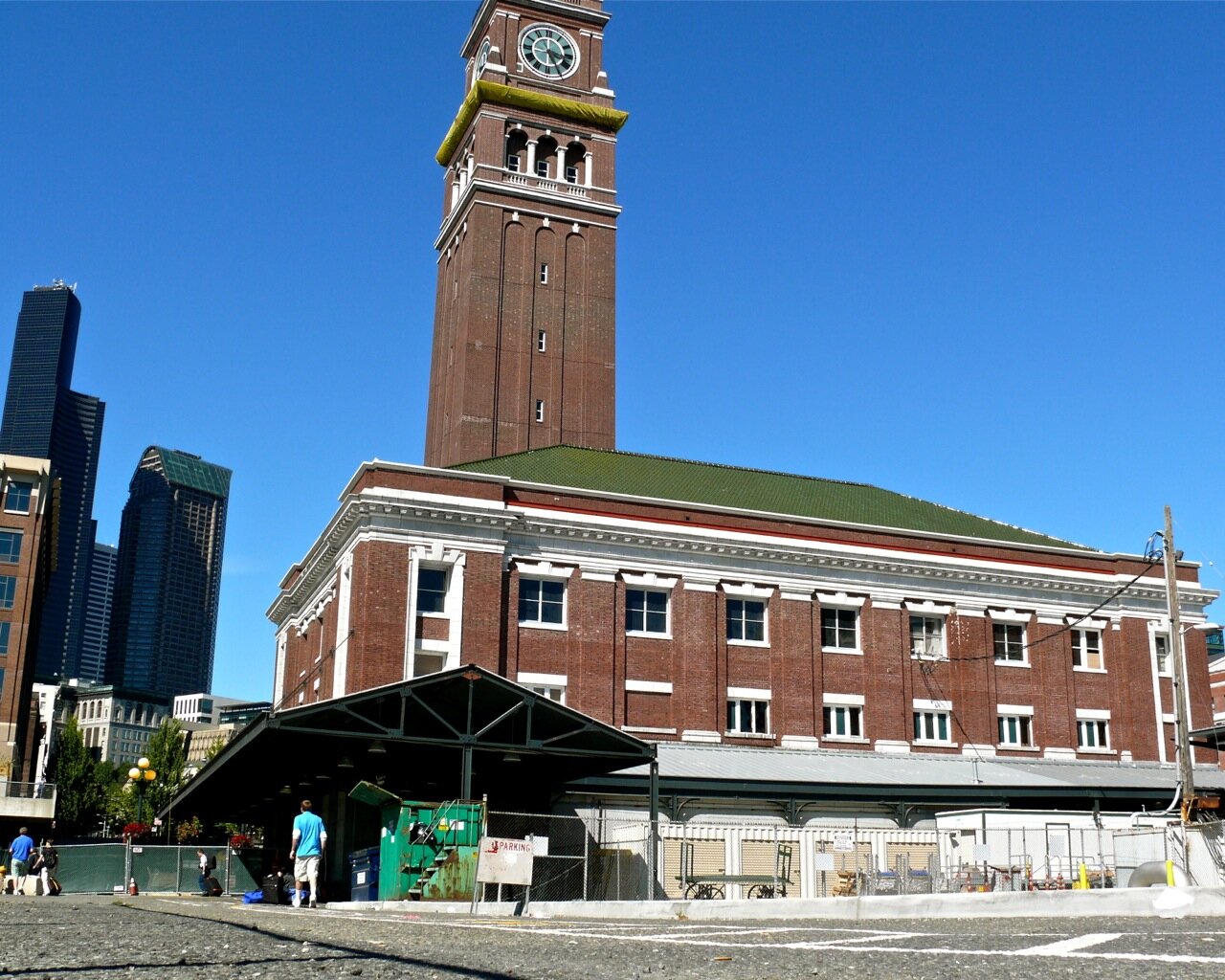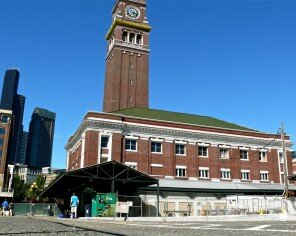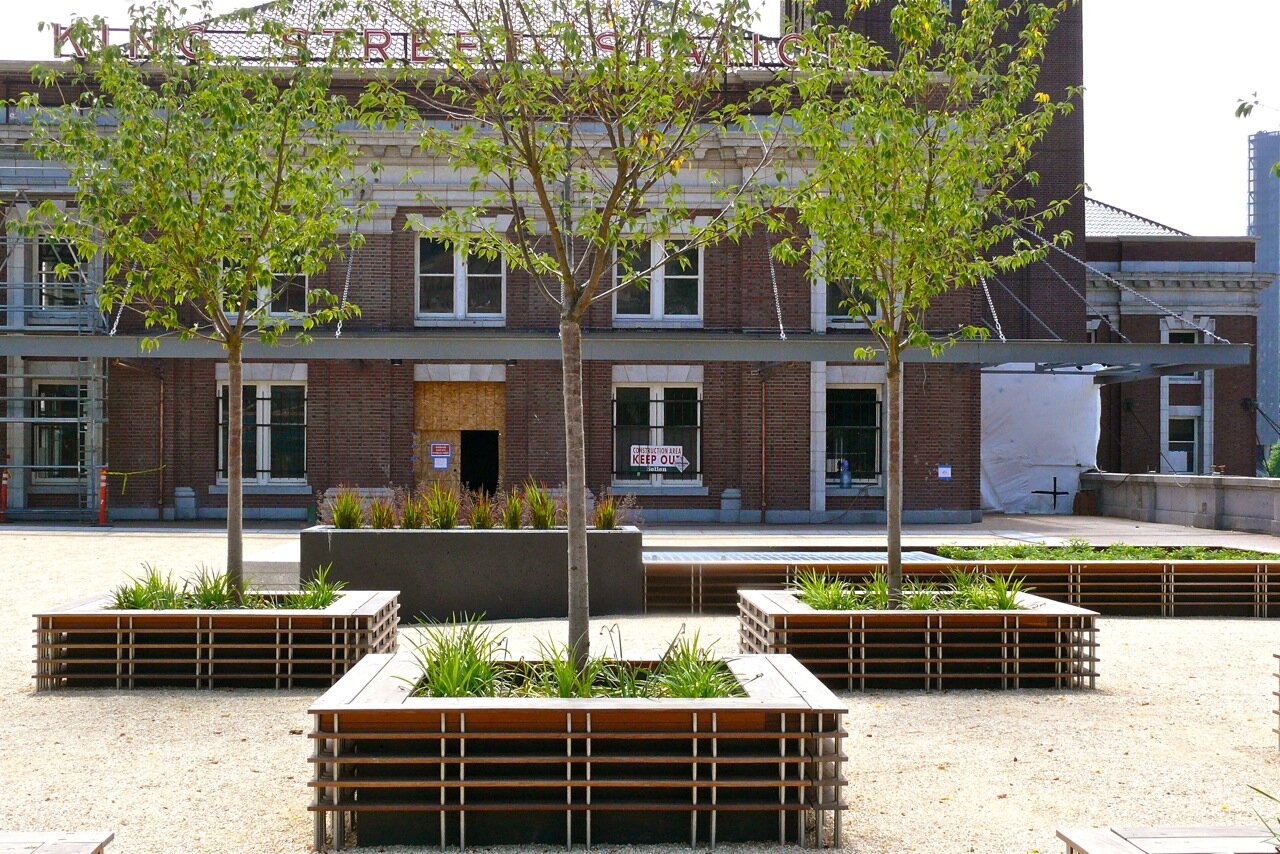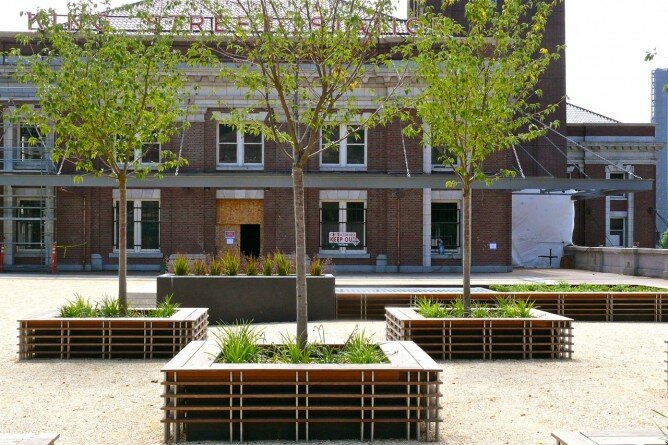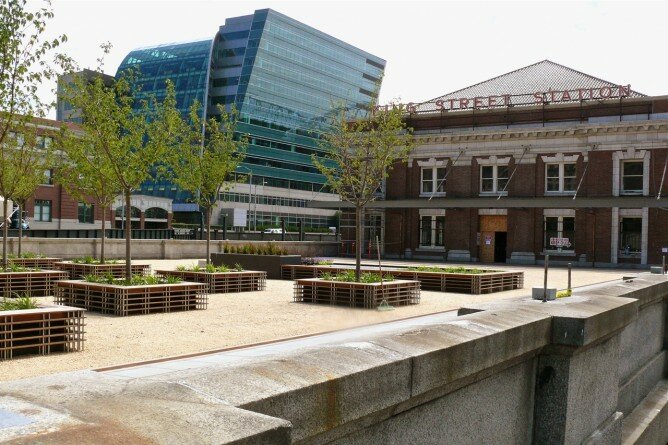I happened to take an Amtrak train from Seattle last Thursday, the day after King Street Station’s new waiting hall opened (here’s a Flickr gallery of the actual event), so I wanted to talk more specifically about the impact the renovation has on the traveler.
The ceiling is about 30 feet high (I have not learned the specific height), not tall enough for the expansiveness of Manhattan’s Grand Central Terminal, or even the reading room at UW’s Suzzallo Library, but it creates enough space for you to relax. The old room (you could not call it a hall) always felt somehow dingy, with its low ceilings and darkness, whereas the new hall will feel clean, barring negligence. (To better prepare for an earthquake, seismic steel has been installed all around the building). King Street Station no longer feels like a place where bad things could happen.
There’s somewhat of a generic “classic big-city train station” feeling to King Street, with its fabricated Corinthian columns, chandeliers, ceiling rosettes, and tiling, none of which come across as original, because they aren’t. If you’ve spent time in other stations of the type, they won’t impress you very much—they’ll simply be nice and attractive—but I think that if you’re used to more contemporary constructions, King Street will make an impact. (Fun fact: when it opened in 1906, King Street boasted a separate ladies waiting room.)
Amtrak has not yet caught up with adding wayfinding signs inside the main waiting area — a layout map with a “You Are Here” would help, too. Where is ticketing? Where are the bathrooms? Where do I get and drop off my luggage? These questions weren’t answered by signs. The men’s and women’s bathrooms are not quite kitty-corner, on the north and west sides of the hall, respectively; the ticketing room is down a corridor on the north side, to the west of the men’s bathroom; and I don’t know where the luggage room is.
In terms of technology, outside of additional electrical outlets along the outside walls, I suspect the waiting hall really does not look much different from its original form. Amtrak does plan to install an electronic passenger information board — but at present, there is no schedule information available, and no in-station WiFi.
When the Central Seattle Public Library opened in 2004, it was supposed to be a destination, a show-off place where people would come to look out at the city, to study, and to simply hang out. I don’t think that has happened (maybe I’m just not impressed by the library), but I could imagine King Street’s waiting hall coming to have that kind of ambiance, even if it does not become a tourist destination. The city says it’s fielded many offers from people interested in opening a food and drink establishment on the upper floor that faces the plaza north of the station. The large stairway that leads down to the waiting hall from there should open around May 6.
At the old King Street Station, a few times I saw sparrows swoop beneath the dropped ceiling and make a circuit around the waiting room. This could still happen in the new station: The difference is that no longer feels likely. (Apparently both rats and pigeons were living in the clock tower; I never saw them, but it would not have been much of a surprise to see them in the old waiting room either. The clock is currently stopped while repairs are being made and should restart perhaps as early as this Friday.)
Similarly, a few times I have ridden a bike to King Street Station and cleaned up from the ride in the bathroom there. Rinsing off and wiping down felt like relatively decorous activities in that bathroom. The new station is too dignified to use the bathroom as a rest stop. It makes the idea of dressing up to board a train seem natural. As the train I took back to Seattle neared King Street, two guys seated two rows ahead of me raved about the new waiting hall, one of them saying, “It’s something for Seattle to be proud of.” The exact reverse was said, many times, about the previous incarnation.
